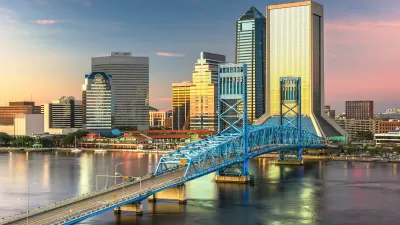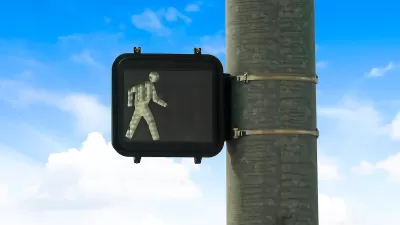Despite an abundance of Vision Zero pledges, U.S. roads remain some of the most dangerous in the developed world.

Writing in the New York Times, Emily Badger and Alicia Parlapiano examine why road deaths in the United States continue to diverge from other developed countries, where traffic fatalities are on the decline.
“In 2020, as car travel plummeted around the world, traffic fatalities broadly fell as well. But in the U.S., the opposite happened,” the authors write. “Much of the familiar explanation for America’s road safety record lies with a transportation system primarily designed to move cars quickly, not to move people safely.” But there are other factors. The article outlines other reasons that converge to make U.S. roads so deadly.
In the 1990s, safety innovations made cars safer around the world. But as the article points out, “as cars grew safer for the people inside them, the U.S. didn’t progress as other countries did to prioritizing the safety of people outside them.” While other countries prioritized pedestrian and cyclist safety, the United States ignored non-drivers in safety tests and infrastructure projects.
More recently, “The pandemic made more apparent how much American infrastructure contributes to dangerous conditions, in ways that can’t be easily explained by other factors.”
Polly Trottenberg, former New York City’s transportation commissioner, says a stronger sense of urgency is needed to make the necessary changes. “We need to change the culture that accepts this level of death and injury.”
FULL STORY: The Exceptionally American Problem of Rising Roadway Deaths

Maui's Vacation Rental Debate Turns Ugly
Verbal attacks, misinformation campaigns and fistfights plague a high-stakes debate to convert thousands of vacation rentals into long-term housing.

Planetizen Federal Action Tracker
A weekly monitor of how Trump’s orders and actions are impacting planners and planning in America.

Chicago’s Ghost Rails
Just beneath the surface of the modern city lie the remnants of its expansive early 20th-century streetcar system.

Bend, Oregon Zoning Reforms Prioritize Small-Scale Housing
The city altered its zoning code to allow multi-family housing and eliminated parking mandates citywide.

Amtrak Cutting Jobs, Funding to High-Speed Rail
The agency plans to cut 10 percent of its workforce and has confirmed it will not fund new high-speed rail projects.

LA Denies Basic Services to Unhoused Residents
The city has repeatedly failed to respond to requests for trash pickup at encampment sites, and eliminated a program that provided mobile showers and toilets.
Urban Design for Planners 1: Software Tools
This six-course series explores essential urban design concepts using open source software and equips planners with the tools they need to participate fully in the urban design process.
Planning for Universal Design
Learn the tools for implementing Universal Design in planning regulations.
planning NEXT
Appalachian Highlands Housing Partners
Mpact (founded as Rail~Volution)
City of Camden Redevelopment Agency
City of Astoria
City of Portland
City of Laramie





























